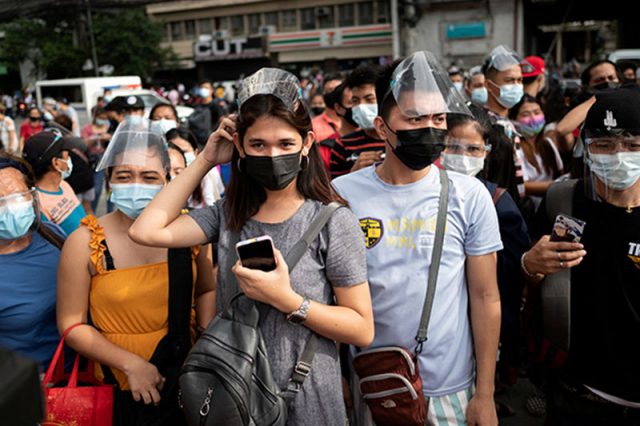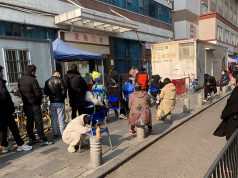
To dispose, recycle, or keep?
Face shields are no longer mandatory in areas under COVID-19 Alert Levels 1 to 3 and some Filipinos are encouraging their fellow citizens to find other uses for it to lessen plastic wastes.
President Rodrigo Duterte on Monday approved the pandemic task force’s recommendation to ease the country’s policy on the controversial plastic gear immediately.
It will only be required in areas under Alert Level 5 and granular lockdown.
For areas under Alert Level 4, local government units (LGUs) and private establishments are given the discretion on whether they will mandate its usage or not.
Meanwhile, wearing of face shields will only be voluntary in Alert Levels 1, 2, and 3.
However, it will be required in medical and quarantine facilities, including in healthcare settings and among healthcare workers.
The government’s almost one-year face shield policy has long been the subject of criticism over the perceived lack of scientific basis. But the health department insists that the policy is guided by science and expert medical opinion.
Some LGUs have also released their own guidelines prior to the announcement already, requiring it only in hospitals and clinics.
The easement of the face shield requirement has brought questions on how it would be utilized by those in areas under low COVID-19 alert level now that it is no longer required to be worn by the public.
Television host and news anchor Gretchen Ho were among those who raised the question in a tweet.
Now what to do with all those plastic shields 🤔 Anybody have suggestions as to where we can bring them?
— Gretchen Ho (@gretchenho) November 15, 2021
Some Twitter users responded that they can give their face shields to recycling center The Plastic Flamingo, a social enterprise that aims to tackle marine plastic pollution in the country.
It collects all types of plastic within Metro Manila and transforms them into products to be used for businesses like eco-lumber, posts, and planks.
The Plastic Flamingo!! They have different drop off locations. too bad wala pa rito sa city namin but still around NCR this might helphttps://t.co/1faqehaTg2
— ada 🧣 #LeniKiko2022 (@kamilleada) November 15, 2021
You can give clean plastics to @zeplaf . They recycle it ☺️
— CRCSDLVÑ 👑 (@akosiunicahija) November 15, 2021
A Twitter user suggested that they could use it for parols or Christmas lanterns since Filipinos are “creative.”
“Convert to Christmas decors. Like lanterns to Christmas tree,” another online user said.
Others quipped that they would use it in cooking, particularly frying, so that their face would be protective against instances of oil popping.
“Sa cooking. Para hindi matalsikan ang face,” a Twitter user wrote in response to Gretchen’s post.
“Useful sa kitchen, [especially] when frying tilapia,” a different user commented.
“Use it ‘pag nagpi-prito. Iwas talsik ng mantika hahahaa,” wrote another Filipino.
Another Twitter user said that they can donate it to healthcare workers who are still required to use it in their work.
“Donate to hospitals. They still need it,” a different user commented.
Others, meanwhile, said that they will just keep it in case COVID-19 infections surge and the alert level in their area is once again escalated.
“Keep them in storage… you might need it again,” a Twitter user wrote.
“Just keep them. Baka bumalik sa Alert Level 4,” another Filipino said.
“I’m definitely keeping them until expiration, to anticipate another Covid spike. Send the rest to our hospitals,” a different user responded.
Face shields first became mandatory in December of last year to “effectively lessen the transmission of COVID-19.”
It has since become part of the minimum public health protocols, to be worn on top of the requisite face masks.
Experts previously said that face shields are not overall effective in stopping aerosol or airborne transmission of the virus causing COVID-19 and that face masks remain the ultimate protection.
A 2020 study published in the journal Physics of Fluids found that although face shields block the initial forward motion of one’s cough or sneeze, the expelled droplets can move around the visor “with relative ease and spread out over a large area.”









